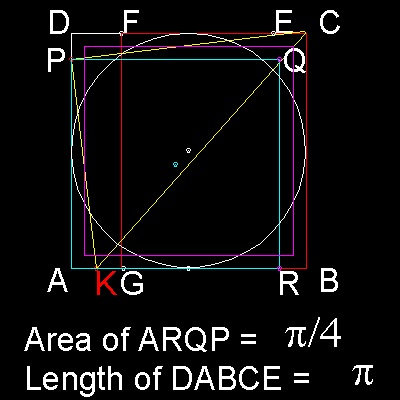
In the drawing below, ABCD is a square sheet of paper.

The circle squaring goes through 3 steps.
1. Find a point E on the side CD such that
the length of DABCE = 355/113 exact.
Use Haga's theorem repeatedly.
2. Make a rectangle with its area = p/4 (FGBC in color red)
length FC = p/4
3. Make a square with its area = p/4 (PARQ in color cyan)
point K is the mid point of AG.
Point P is found by moving corner B using K as pivot
until B touches line AD.(in yellow lines)
AP is one side of the square.
Note that crease line through K is slightly off the point C.
|
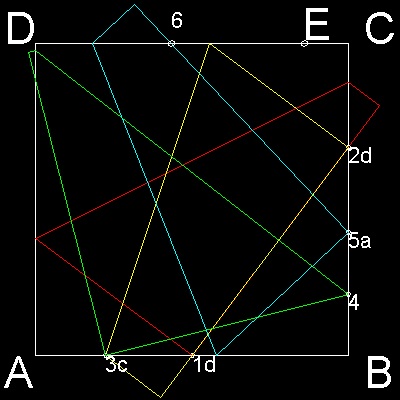
1. Move the corner point D to the mid point of AB ("1d").
Mark the point where CD crosses BC ("2d")
This point is at the distance of 1/3 from point C.
2. Move the corner point D to point "2d".
This creates point "3c".
Distance between B and "3c" is 7/9 .
3. Move point C to "3c".
This creates point "4", which is 16/81 from point B.
Double this distance (32/81) and creates point "5a".
4. Move corner A to point "5a".
This creates point "6" at 64/113 from point C.
5. Take 1/4 of this length from point C. This is point "E".
The total length of DABCE is 355/113,
which is a very good approximation of p.
355/113 = 3.14159292...
p = 3.14159265...
|
You can see the process in animation.
To create this drawing and animation:
Load Haga_circle_sqr.lsp (load "Haga_circle_sqr")
Then from command line, type Haga_step_1
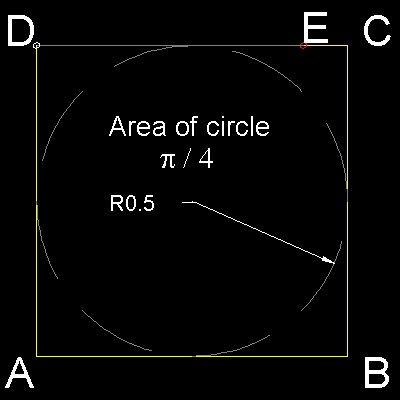
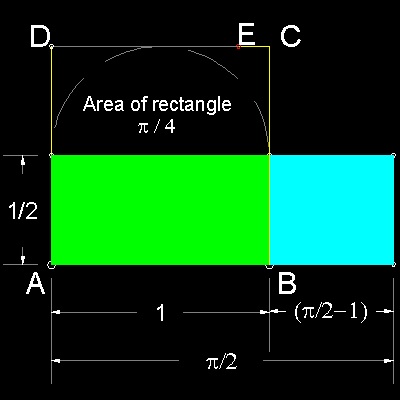
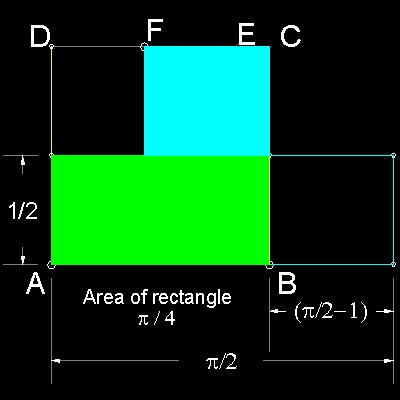
Haga_circle_squaring_step_2_0.dwg Area of a circle inscribing the square = p/4 . Haga_circle_squaring_step_2_1.dwg A rectangle , made up of 2 rectangles (green & cyan), has the same area. Haga_circle_squaring_step_2_2.dwg Let F be the mid point of DE. Since DE = 4 - p, FC = 1 - DE/2 = p/2 - 1 So the rectangle in cyan color can be moved up to align with FC. |
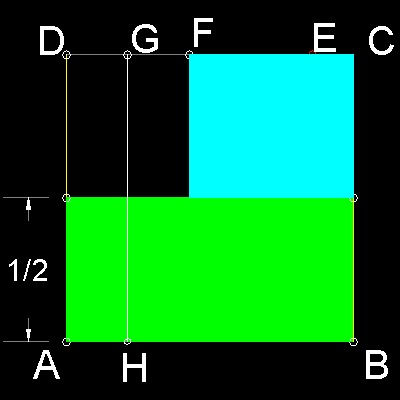
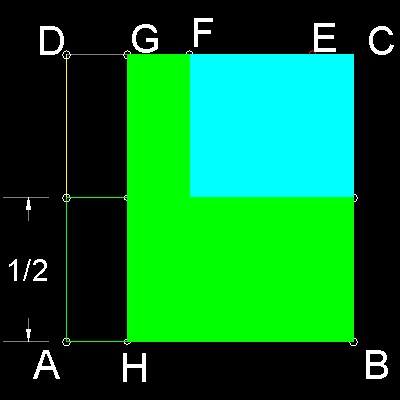
***** Haga_circle_squaring_step_2_3.dwg *****
***** Haga_circle_squaring_step_2_4.dwg *****
Haga_circle_squaring_step_2_3.dwg Let G be the mid-point of DF, and GH be drawn parallel to DA . Haga_circle_squaring_step_2_4.dwg A part of green rectangle between DA and GH can be moved up to fill space between cyan rectangle and line GH. Now rectangle GHBC has the area = p/4 . |
To create this drawing :
Load Haga_circle_sqr.lsp (load "Haga_circle_sqr")
Then from command line, type Haga_step_2
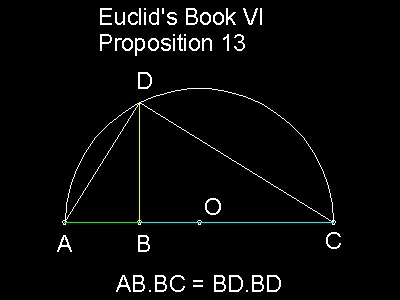
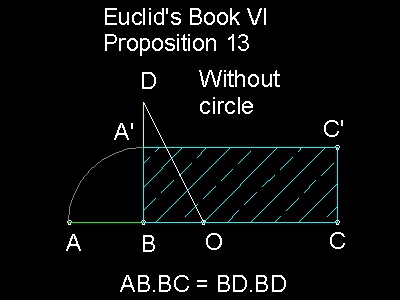
Euclid_prop_13.dwg Let AB, BC be the two given straight lines. Draw a semi circle ADC with diameter AC. Let BD be drawn from the point B at right angle to the line AC. Then AB x BC = BD2 Euclid_prop_13_a.dwg Even when a semi-circle cannot be drawn by some reason, then if we let OB = OD, point D can be defined. This is exactly the case here. Note that OB = OD = (1/2)(AB + BC) |
To create this drawing :
Load Haga_circle_sqr.lsp (load "Haga_circle_sqr")
Then from command line, type Haga_step_3
All questions/suggestions should be sent to Takaya Iwamoto
Last Updated Feb 24, 2007
Copyright 2006 Takaya Iwamoto